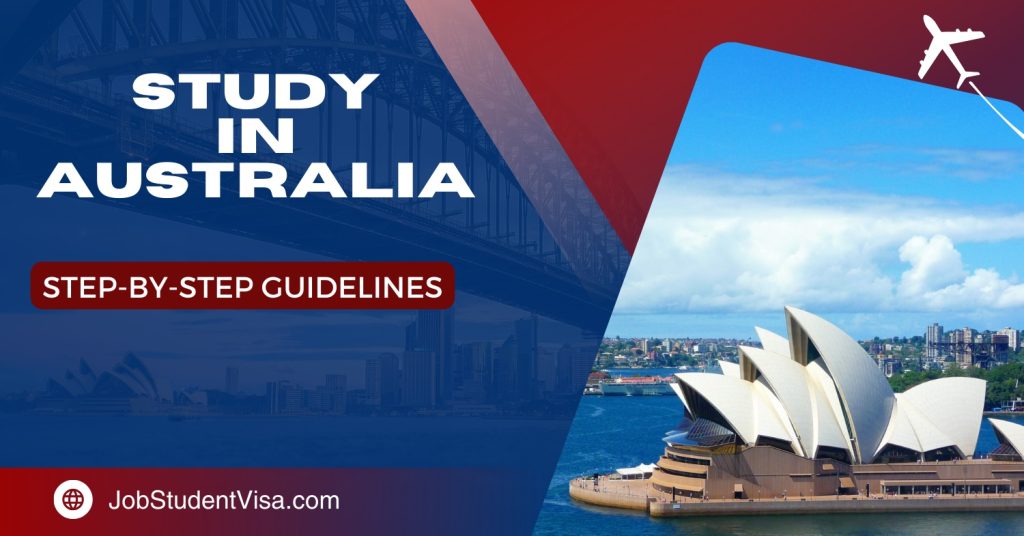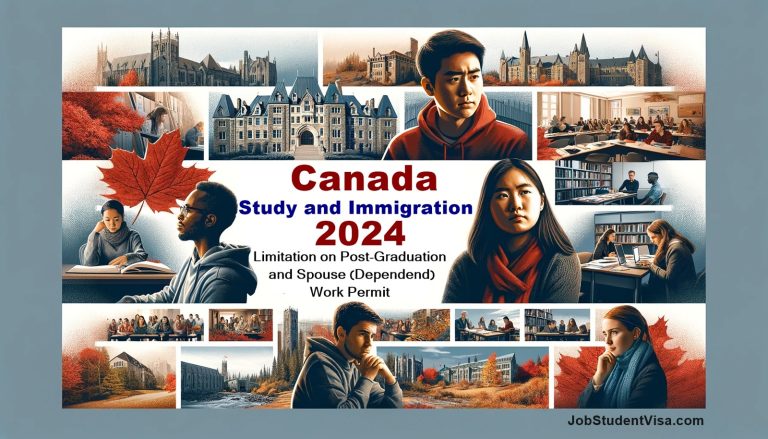Student Visa Requirements for Australia: An 8-Step Guide
In a world increasingly driven by the pursuit of quality education and cross-cultural experiences, Australia has emerged as a beacon for international students. However, the journey to studying down under is paved with various visa requirements that can be daunting. This detailed exploration aims to demystify the process, providing a comprehensive guide for aspirants dreaming of Australian academics.
Visa Requirements for International Students in Australia: Step-by-Step Guidelines
Navigating the complexities of obtaining a student visa for Australia can be a daunting task. This guide breaks down the process into manageable steps, ensuring a smooth and successful application experience for prospective international students. This detailed guide aims to provide a thorough understanding of each step involved in securing a Student Visa (subclass 500) for your educational journey in Australia.

Step 1: Secure Admission to a CRICOS-Registered Institution
- Research and Apply: Begin by researching Australian universities or institutions that offer the course you’re interested in. Ensure they are registered on the Commonwealth Register of Institutions and Courses for Overseas Students (CRICOS).
- Application Process: Submit your academic transcripts, letters of recommendation, personal essays, and any required test scores (like the SAT, ACT, or GRE) as part of the application. Customize your application to fulfill the distinct criteria of each individual institution.
- Acceptance and Offer: Once accepted, you will receive an offer letter. This can be a conditional offer (requiring you to meet certain criteria) or an unconditional offer. Accept the offer by signing and returning the acceptance form, often accompanied by a deposit for tuition fees.
Step 2: Understanding the Student Visa (Subclass 500)
- Visa Overview: The Student Visa (subclass 500) allows you to participate in an eligible course of study, work part-time while studying, and stay in Australia for up to five years, depending on your course length.
- Eligibility Criteria: To be eligible, you must have a Confirmation of Enrollment (CoE), meet English language requirements, have adequate health insurance, and prove you have enough funds to support yourself during your stay.
Step 3: Document Preparation
- Confirmation of Enrollment (CoE): After accepting your offer and paying your deposit, the institution will provide a CoE, a crucial document for your visa application.
- Genuine Temporary Entrant (GTE) Requirement: Prepare a detailed statement indicating your intention to return home after your studies. This should include your ties to your home country, economic situation, and reasons for choosing Australia and the specific course.
- Financial Evidence: You must demonstrate you have enough funds to cover your tuition fees, living expenses (approximately AUD 21,041 per year), and return airfare. Evidence can include bank statements, a letter from a financial sponsor or scholarship, and loan approval documents.
- English Language Proficiency: Submit your IELTS, TOEFL, PTE, or other accepted English test scores, meeting the criteria set by your institution.
- Health Insurance: Obtain Overseas Student Health Cover (OSHC) for the duration of your stay.
- Additional Documents: Gather all academic transcripts, evidence of work experience, a valid passport, and character and health certificates. Ensure all documents are translated into English by a certified translator if they are in another language.
Step 4: Visa Application
- Online Submission: Apply online through the Australian Department of Home Affairs’ ImmiAccount. Fill out the visa application form accurately, and upload all required documents.
- Application Fee: Pay the non-refundable visa application fee. The fee is subject to change, so check the latest on the official website.
- Interview and Biometrics: Depending on your country of residence, you may be asked to attend an interview or provide biometric information.
Step 5: Health Examination and Biometrics
- Health Check-Up: You might be requested to undergo a medical examination by a doctor approved by the Australian government. This is to ensure you meet the health requirements and do not pose a public health risk.
- Biometrics Collection: Provide your biometrics (fingerprints and photograph) at an authorized collection center. This is a security measure and helps in verifying your identity.
Step 6: Visa Processing and Decision
- Processing Time: The processing time varies based on several factors, including the time of year, completeness of your application, and your response time to any additional information requests.
- Stay Informed: Use your ImmiAccount to track the progress of your application.
Step 7: Pre-Departure Preparations
- Visa Approval: Once your visa is approved, you will receive a visa grant number and the date from which your visa is valid.
- Travel Arrangements: Book your travel to Australia. Be mindful of the date from which your visa allows you to enter the country.
- Accommodation and Logistics: Arrange for accommodation, whether university housing or private rentals. Also, familiarize yourself with Australian laws, culture, and the environment to ease your transition.
Step 8: Understanding and Complying with Visa Conditions
- Compliance is Key: Violating visa conditions can lead to cancellation. Understand your work rights (limited to 40 hours per fortnight during term time), study requirements, and obligation to maintain OSHC.
- Notification Requirements: You are required to inform your institution and the Department of Home Affairs of any changes in your address, contact details, or education provider.
Conclusion:
Applying for an Australian student visa requires careful planning, attention to detail, and adherence to guidelines. This comprehensive guide aims to clarify the process, helping you navigate your path to studying in Australia with confidence and ease. Remember, staying organized and starting early are the keys to a successful application.






